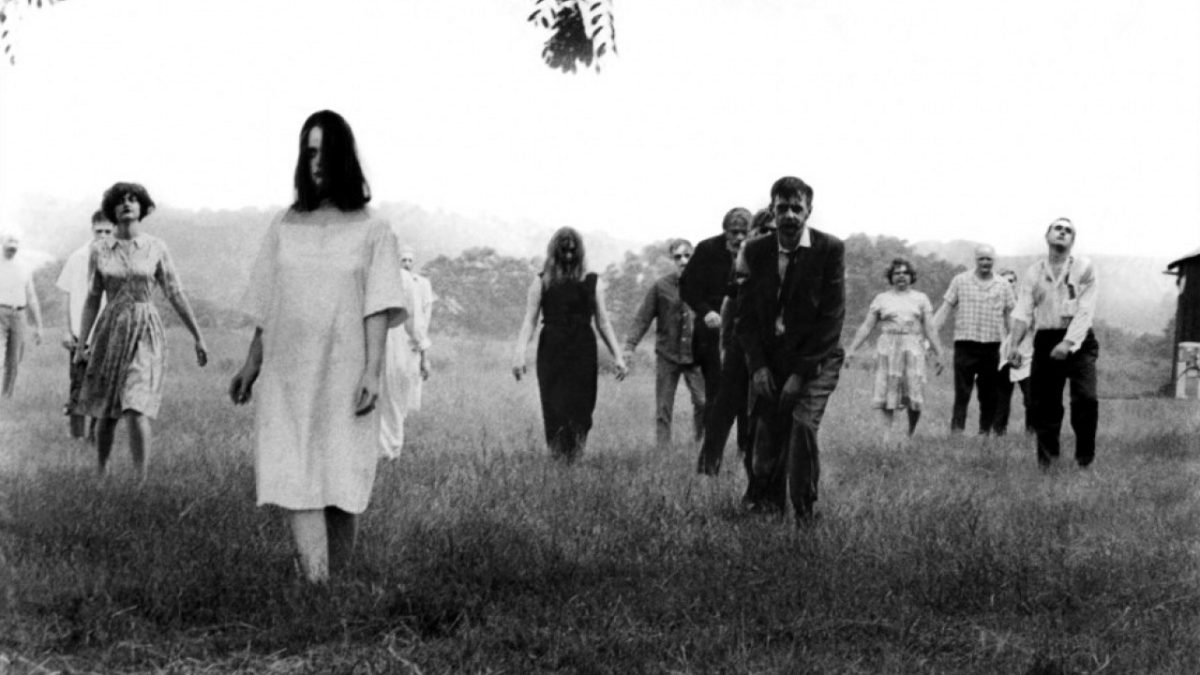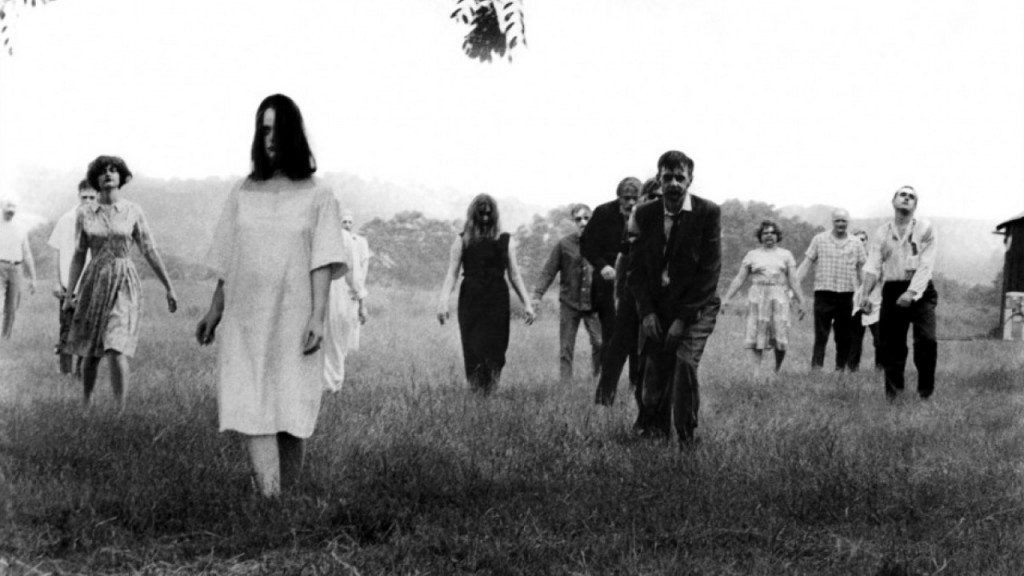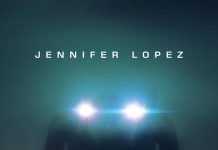It’s a seldom spoken but universally acknowledged truth that people like to be scared. It’s why people enjoy riding rollercoasters and activities such as skydiving, abseiling and bungee jumping, and – of course – why people enjoy horror films.
A staple of cinema almost since the art form was invented, choosing the ten most frightening horror films ever made is pretty much an impossible task (just deciding on the criteria alone could take you several hours). Even attempts to subdivide such a task into subcategories are massively subjective. Nevertheless, with the theatrical release of David Robert Mitchell‘s It Follows, now seems a good time to attempt to do a top 10 most frightening horror films list with a slight twist; a decade-by-decade list, starting with the 1920s, choosing one example to stand out as the most frightening horror film that decade those ten years had to offer.
1. Nosferatu, eine Symphonie des Grauens (A Symphony of Horror) (1922)
The vampire film from which all others sprung, there is no denying that even close-to-100-years after it was made, F. W. Murnau‘s unauthorised adaptation of Bram Stoker’s Dracula remains a remarkably unsettling viewing experience to this day.
An archetypal example of German Expressionist cinema; the (literally) awesome starkness of the locations, the framing of every shot, the interior set design of the vampire’s castle, the architecture, and the contrast between light and shadow all give the film the aesthetic of heightened, disjointed reality akin to that found in a nightmare, which would – both in terms of visuals and atmosphere – go on to form something of a template for many-a-horror filmmaker in years to come, from Todd Browning‘s Dracula (1931), to Roger Corman‘s Poe Cycle (1960-1965), to Dario Argento‘s Suspiria (1977).
The ultimate expression and, indeed, personification of this aesthetic is the film’s vampire, Graf Orlock (brought chillingly to life by actor Max Schreck), whose sunken eyes, hunched shoulders, clawed hands and rat-like incisors make him uniquely unnerving vampire. He’s most definitely monstrous, a far cry from the urbane, romantic likes of Christopher Lee and Bela Lugosis, yet at the same time is not so laden in prosthetics or makeup (as, say, the vampires in Robert Rodriguez‘s From Dusk till Dawn are) as to appear cartoonish. In this way, Orlock uncannily straddles the line between human and grotesque, and is all the more repellent for it.
To this day, Nosferatu remains the best adaptation of Stoker’s Novel (and I speak as a fan of many of the subsequent retellings), and one can only breathe a sigh of relief that the order to destroy all prints of the film following a legal battle with the Stoker estate was so incomprehensively executed.
2. The Black Cat (1934)
By the 1930s, the biggest name in the horror film business was Universal Studios and their ever-growing stable of memorable monster characters such as Bela Lugosi‘s Count Dracula, and Boris Karloff‘s Frankenstein’s Monster and Mummy. To this day, the vast majority of them stand up as well made, solidly entertaining fare with a distinctively Gothic house style, and often as not, are also clever, witty and subversive. However, for all these strengths, it must be admitted that – with the best will in the world – few of them still have the power to genuinely frighten. That being said, there are still several universal films that can lay claim to being genuinely unsettling, and Edgar G. Ulmer‘s The Black Cat – the first Universal film to team its horror stars Lugosi and Karloff – is one of them.
With a distinctive look inspired by the Bauhaus art school, and making similar use of starkly contrasting light and shadow as does Nosferatu to create a world that – morally – is almost pitch black, The Black Cat is a film that drips with an air of menace. However, though it has it in abundance, it doesn’t earn its place on this list for atmosphere alone. The subject matter and themes dealt with in the film (which include Satanism, torture and sexual perversion), scandalous at the time of its release, remain shocking viewing, and culminate – without wishing to give too much away – with a scene of truly horrific (albeit not outright explicit) brutality which still has the power to make the viewer wince to this day.
3. Dead of Night (1945)
An early example of a portmanteau horror film (which would later go on to become the staple of British film company Amicus in the 1960s and 1970s), Dead of Night is an Ealing film which tells the story of a group of people who have come together in a cottage in the English countryside, all of whom – it transpires – have some story to tell pertaining to an experience each of them have had of the supernatural.
One Dead of Night‘s great strengths is the masterfully subtle and understated way in which it juxtaposes horror with humour. Greater still is the sense of impending and inescapable, yet unspecified, doom throughout the film, illustrated wonderfully through the performance of the Mervyn Johns as the film’s de facto main character. This allows the narrative to uphold the tension, keeping the audience on a knife-edge, even during the linking narrative in between the individual tales of terror each guest at the house has to tell. What’s more, it’s a tension that pays off with an almost David Lynch-esque denouement, which is as ambiguous as it is surreal.
The best known, and probably the strongest, segment of the film is a story regarding an unhinged ventriloquist, played by Michael Redgrave, and his dummy Hugo, but absolutely none of it is anything less than chilling (with the exception of the intentional comic relief segment). To say that the whole of the film is greater than the sum of its parts sounds like damning with faint praise, however that is not the case at all. Just the sum of Dead of Night‘s constituent segments would be a masterpiece of macabre storytelling. The fact that it is greater still is nothing short of cinematic brilliance.
4. The Quatermass Xperiment (1955)
Much as Universal Studios were synonymous with the horror genre in the 1930s and 1940s, so were British Hammer Studios in the 1950s through to the 1970s, with relaxations in film censorship allowing for more explicit horror, gore and – eventually – sexuality to make its way into horror films.
However (as was the case with the Universal films) for all Hammer’s gushing blood, to modern audiences used to greater (and more realistic) levels of splatter, their output may have lost the ability it once had to genuinely shock or horrify. It is for this reason that their very earliest foray into Horror, The Quatermass Xperiment (proudly flaunting its certification in the title of the film), remains one of their strongest: A re-working of a BBC Television Serial by Nigel Kneale, The Quatermass Xperiment deals with astronaut Victor Carroon, who returns from a mission into outer space altered by his experience into something alien.
There are some genuinely and explicitly horrific sequences in the film, often involving the mutating Carroon absorbing the life force from people with whom he comes into contact. However, the real horror of the story comes from what happens to Carroon himself; the depiction of a man slowly but relentlessly becoming something monstrous and inhuman, both physically and mentally.
Certain ideas about how one would go about a manned space-flight obviously date the film, but that’s just about the only thing that does. Otherwise, it remains an effective psychological and body horror film, as repulsive today as it was 60 years ago.
5. Night of the Living Dead (1968)
Prior to 1968, the idea of the zombie remained firmly tethered to its roots in Haitian voodoo ritual, in films such as I Walked With a Zombie (1943). It was George A. Romero‘s Night of the Living Dead that invented the zombie as we almost exclusively know it today: the shambling, decaying corpse with a taste for human flesh, and even with almost 50 years of them shuffling across our screens, it is this film and its sequel, Dawn of the Dead, that remain the most effective depictions of the concept.
The strength of Romero’s zombies (or ghouls, as they are referred to in the film) is quite simply that their whole existence completely undermines the idea – still largely held on an instinctive level, even in increasingly secular society – that a person’s humanity is in some way (for want of a better word) sacrosanct. They themselves are animated cadavers, and unlike Frankenstein’s Monster or Dracula, there isn’t even a vestige of their personality remaining to distract the audience from that fact. As the film shows, once a person (a child, no less, in this instance) is a zombie, they will, quite instinctively and unthinkingly, stab their own mother to death just so that they can eat them.
Their cannibalism is likewise an undercutting of societal values. Whilst it is true that horror fans are used to seeing the human body transformed in some way, or become sustenance to a creature like a vampire (in deeply romanticised fashion), there is nothing that seems quite so much like a defilement as the scene in Night of the Living Dead in which the young couple, Tom and Judy, are killed in an exploding truck, only to have their remains unceremoniously (and graphically) devoured by the zombies they were attempting to fend off.
In short, what makes Romero’s zombies frightening is that they are a complete perversion of what many would say (and definitely would have said at the time) are fundamental societal norms. There’s no reasoning with them; no romanticising or injecting pathos into what they do. They’re simply relentless, remorseless, and insatiably hungry. And they’re coming to get you… Barbra.
This completes our first half. Keep your eyes peeled for Part 2…































[…] posted in two parts on […]
Comments are closed.